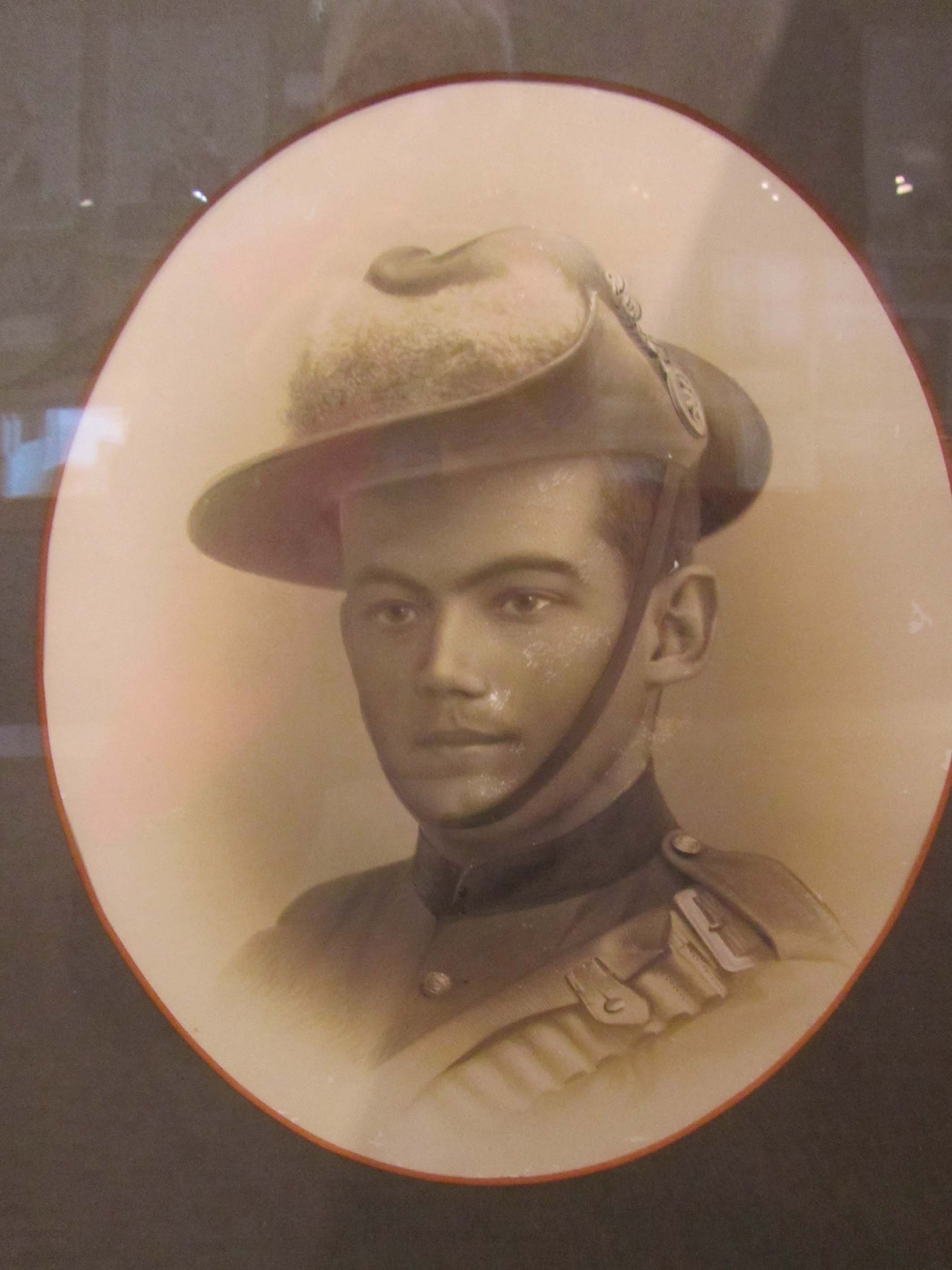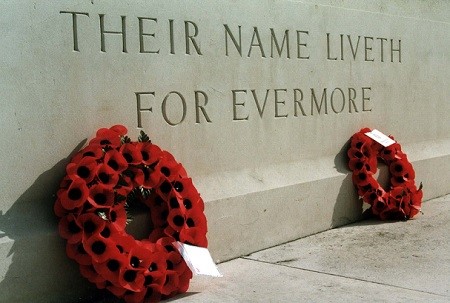Colin Stirling was a student at Toowoomba Grammar School from 1899 to 1900. Prior to enlistment he was in the employ of the Toowoomba Branch of the Queensland National Bank and was highly thought of by officials. The Queensland Times 15 August 1901 reports that, ‘When his resignation was sent in he was asked to reconsider it and remain with the bank. He, however, declined being determined to try his luck in South Africa.’ In 1901 he enlisted with the Fifth Queensland Imperial Bushmen at the age of 16 years 3 months. This contingent, 500 strong, with a cyclist section, was commanded by Lieutenant Colonel J.F. Flewell-Smith. They sailed on the Templemore on 6 March 1901, and arrived in South Africa in the beginning of April. They at once took to the field. Photo courtesy of Allan Stirling of Cooparoo, Queensland. In a letter reposing in the School Archives dated 26 November 1974, written by his Old Boy brother Allan E V Stirling, the assumption is made that, ‘I think he would be the first boy from the School to have been killed in any war’. There is nothing in the school records to indicate otherwise.
Toowoomba Chronicle and Darling Downs General Advertiser. Thursday 15th August 1901. CASUALTIES AMONG QUEENSLANDERS. TWO TOOWOOMBA LADS SHOT DEAD – PRIVATES COLIN STIRLING AND R. R. CUMMING.
News was received on Tuesday afternoon that in an engagement at Kopjesfontein, on the 6th instant, the following casualties occurred among members of the Fifth Queensland Contingent: — Private Colin Stirling (No. 110), son of Mr James Stirling, of Rome Street, Toowoomba, was killed. Private Robert Ross-Cumming (No. 475) was accidentally shot dead at Katdombult Farm, on the 5th August. Private Colin Stirling was the eldest son of Mr James Stirling, of Rome Street, Newtown, Toowoomba, and was about the youngest member of the Australian Contingents. Before proceeding to the war he was in the employ of the Toowoomba branch of the Queensland National Bank, and when his resignation was sent in he was asked to reconsider it and remain with the bank. He, however, declined, being determined to try his luck in South Africa, with the sad result stated. The deepest sympathy is manifested for Mr and Mrs Stirling in their very sad bereavement. Private Cumming was the son of Mr W. Cumming, of Drayton Road and Harrow, and, like Private Stirling, was a fine, manly youth. The deepest sympathy is also manifested with the unfortunate young man’s relatives.
Toowoomba Chronicle and Darling Downs General Advertiser. Tuesday 24th December 1901. OUR FALLEN HEROES – TOOWOOMBA’S DEAD – HOW COLIN STIRLING DIED – THE TRUE VERSION – TROOPER DON URQUHART INTERVIEWED.
We have already published in these columns an account of how young Colin Stirling, one of Toowoomba’s representatives in the 5th Queensland Bushmen was killed in action, but from information which recently reached the gallant lad’s parent, it transpired that the version published is not strictly accurate. One of his comrades, Trooper Don Urquhart, who, it will be remembered forwarded several interesting letters from South Africa to this journal, returned from South Africa a few days ago. Trooper Urquhart was one of the ill-fated party of five on the day that Corporal Anning and Trooper Stirling were killed, and his horse was shot under him, with the result that he sustained a broken leg, and while lying unconscious was partly stripped by the Boers. After recovering in the Kimberley Hospital from his injuries he was invalided and returned to Australia by the Persic. He came on to Toowoomba, where he communicated to Mr and Mrs Stirling the true fact concerning the death of their son. In order to place these facts before the public a representative of this journal yesterday interviewed Trooper Urquhart, and he very courteously consented to give a plain unvarnished statement of facts. Trooper Urquhart, who is a New Zealander, and a tall stalwart typical representative of “Newest England” as Maoriland has been called, joined the 5th Queensland Imperial Bushmen at Brisbane – that corps which is now known among the colonial contingents at the “Fighting Fifth”. And which has been in more tight places and encountered more hot work than perhaps any of the colonial contingents in South Africa during the last six months.
Trooper Urquhart who, like all brave men, is very modest and self-retiring, particularly wished so far as possible to keep his own name out of the affair. “I do not want to advertise myself.” Briefly his story is as follows: “On the 6th August this year, the two columns under command of General Plumer, split up at the Modder River. The New Zealanders still remained under General Plumer, whilst the 5th Queensland Imperial Bushmen were given in charge of Colonel Jarvis, and it was the duty of the Queenslander to march to Kopperfontein. At daybreak we left camp and marched until 4 o’clock that afternoon when we made a halt. Outposts were then sent out, and word came in that a number of cattle were seen away on the hill flats. Under Lieutenant Cowell, I and company was to proceed and “commandeer” these cattle. Nine of us (mounted) went out about 5pm, and we all cut the wires in a fence. After leaving the top of a hill we advanced down to a bit of a donga. When we got down to this donga we all stood discussing the best way of bringing the cattle to the camp. Some of the men wished one direction to be taken and others the opposite, and the end of the discussion was that four of us went one way and five including Colin Stirling, Corporal Anning, Brace, Craig and myself decided to go straight for the cattle, with of course, our officer’s consent. We had just struck out a few minutes and Corporal Anning was a few horse lengths in front of us when a rapid volley came from a body of Boers, of whose presence we had not the slightest suspicion. Anning was riddled with seven bullets and he fell down off his horse (some text is missing at the bottom of the page) were the last words uttered then he, also, was shot and fell off his horse, death being instantaneous. The bullets were thick and fast just then, and my mare was becoming restless when all of a sudden the enemy hit her in the foreleg, then in the hindquarter, then right through the head, the last shot felling her. As a result of her rolling my leg was fractured.
Brace was shot through the ankle, and Craig was just going back to get shelter when his was shot under him. Craig, however managed to escape unharmed, and reached camp subsequently by a circuitous route. As soon as our men in the camp heard the firing a party was sent out, who poured a tremendous volley on the Boers; but all the time the fighting continued up to 11 o’clock at night. We lay there alone owing to the fact that the firing was too hot for them to reach us. The Ambulance subsequently came down and took us up; but not before the Boers had stripped both the dead bodies of Anning and Stirling, captured Craig’s horse, and took my jacket and shirt off, while I was lying unconscious. Brace with his injured ankle had managed to slip away to shelter. The dead men were brought into the camp and had a decent burial.
Stirling and Anning were both favourites and very popular among our chaps, and we felt their loss very keenly. The Lieutenant Colonel was also very much cut up about the incident, and he almost cried at hearing the news. The Boers kept on their ridge all the night but they never made a charge. In the morning about fifty of the Queenslanders went over towards their way but they had finally disappeared. They, however, ran into General Plumer’s column, which captured most of them next day. Afterwards our column joined Plumer’s and we marched back to Modder River station. General Plumer addressed us regarding the incident, and said he was very sorry at the loss, and he felt it very much. Regarding the fighting qualities of the 5th Queensland Imperial Bushmen, he said that they were the best contingent he had known, and certainly he would always try to obtain command over such excellent soldiers as the Queenslanders had proved themselves to be. Questioned on a few other matters Trooper Urquhart said that the locality they were in was very similar to the Darling Downs, and he had often remarked this before. It would be splendid country after the war. There was, however, no scrub land. There was plenty of grass, and stock were in excellent condition in August. Great inducements were being offered to them to stay in the country, such as Civil Service occupations, etc., but though these offers might be worth accepting in peaceful times they were hardly worth the risk at present. Trooper Urquhart confirms the opinion that “roughing it” has certainly an excellent effect on our lads, and he mentioned a few Toowoombaites who, he said, would be practically physically “made” by the experience. The Boers are greatly in want of clothes, and men have been caught wearing women’s skirts, besides a great number in khaki.
The following are extracts from, ‘Official Records of the Australian Military Contingents to the War in South Africa’ compiled and edited for the Department of Defence by Lieut.-Colonel P.L. Murray, R.A.A. (Ret) – Naval and Military Press Ltd 2007 p487-495.
The Contingent left on 6th and 10th March 1901, comprising – 23 officers, 506 others, with 476 horses. Two officers, 33 others, were killed or died; 12 officers, 58 others were struck off in South Africa; 16 officers, 413 others, returned to Australia.
This Contingent departed in the transport Templemore, on 6th March 1901, and arrived at Port Elisabeth on 1st April. Left by three trains for Kroonstad on the same day, and reached there on the 4th; thence to Elandsfontein, and thence vid The Springs to Pretoria arriving on the 9th. From this city, the 5th entrained for Pietersburg, that being the terminus of the northern line held by the enemy, and on which the 3rd and 4th Queensland Contingents were marching. Arrived on the 11th; and on the following day the Battalion was attached to Colonel Jeffery’s Corps of Brigadier =-General H.C.O. Plumer’s ‘ Forces’, (consisting of Craddock’s and Jeffrey’s Brigades), with which it served continuously.
On the 10th March, a draft consisting of 1 subaltern, 1 sergeant and 24 rank and file with 100 horses, left Pi
nkemba (Brisbane) by the transport Chicago; disembarked at Port Elisabeth on 20th April and joined the Contingent.
Having received remounts and transport, the 5th started on trek south-easterly on 14th April and were engaged on outpost and patrol duty in the neighbourhood of Oliphant’s River, until 25th. Then the force under Colonel Jeffreys was divided into three parts and came into contact with the enemy in the vicinity of Tabak Plaats Camp, when a brisk skirmish ensued. Since leaving Pietersburg, no less than 170 horses had either died or been destroyed, suffering from ‘horse-sickness’. On 28th, trekked south-west, and joined remainder of Plumer’s force at Badfontein. Passed through Coomassie Poort and Usekraal and arrived at Silverton, 5 miles from Pretoria on 6th May. Left on 14th; reached Bethel (then being burned) on 21st; and marched on 30th; Hartab on 2nd June having constantly encountered parties of the enemy; and brought in prisoners, sheep, horses, goats and vehicles.
At Piet Retief on 10th, where the Cyclist company, having proved unsuitable, were all mounted (except six) with horses of the 4th Contingent, which was returning home. Thence to Zinderhoek; and on 15th skirmish at Slaughn’s Berg. On 17th at Kopje Eileen; and operations as far as Utrecht on 23rd. Started on 28th to trek through Privaan’s Poort; various operations, and halted at Bothwell, 7th July. Thence to Carolina and Klippen by 12th and to Wonderfontein; at which place entrained on 16th in four trains, destination unknown, but on 18th detained at Bloemfontein. Marched on 24th to Kruger Drift; arrived at Poplar Grove on 26th, and Modder River on 31st. Lieut_Colonel Flewell-Smith here received notice to proceed to Cape Town by train to take up appointment as a District Commandant in Cape Colony. The command of the Battalion, thereupon devolved upon Major F.W. Toll during the remainder of their campaign. On 15th August 2 men
Lance Corporal Anning Memorial
The monument was financed by public subscription and commemorates the death of Lance Corporal John Anning who lost his life in the South African (or Boer) War. The memorial was originally erected at the junction of Lytton and Hemmant Roads, but was re-sited in 1968 after it was hit by a car.
The Anning Monument is a sandstone memorial rising to an obelisk draped by a tasselled shroud. Crossed rifles on a folded banner are carved in relief on the front face of the obelisk. The pedestal has two leaded marble plates, and a trooper`s hat and bandolier carved in high relief at the base
The Anning Monument is historically significant for reflecting Australia`s participation in the South African (or Boer) War of 1899-1902 and the Empire ties of that era. Despite having been moved from its original location, the memorial is of considerable interest for revealing social values of the time, as seen in the erection of a monument to an individual as opposed to a group of servicemen.
The little township of Hemmant, near Wynnum, was a centre of attraction on Saturday afternoon, on the occasion of the unveiling of the Anning memorial. Colonel Price unveiled the memorial and said he stood there with mixed feelings-feelings of sorrow which every soldier must have for a soldier who is dead, sympathy with relatives in their bereavement, admiration at the nature of the death, and feelings of gratitude to those who had so honoured him. He was one of fifteen lads who had gone from that district, and the fact that he was one of a small patrol of seven, of whom two were wounded, and five horses shot showed that the fight was no childish one. He died like an Australian on the 6th August, 1901, and it was to their credit that they had erected the magnificent monument. At school, he was told, their comrade was always a great favourite, ever a hard worker and a good lad, and in the field he was just the same. He had earned his rank of acting corporal.
The Brisbane Courier (Qld), 16 March 1903.Location
Address: Hemmant – Tingalpa Road & Boonoo Street, Hemmant, 4174
External Links
Australians in the Boer War Oz-Boer Database Project
AWM war unit diary 5th QLD Imperial Bushmen
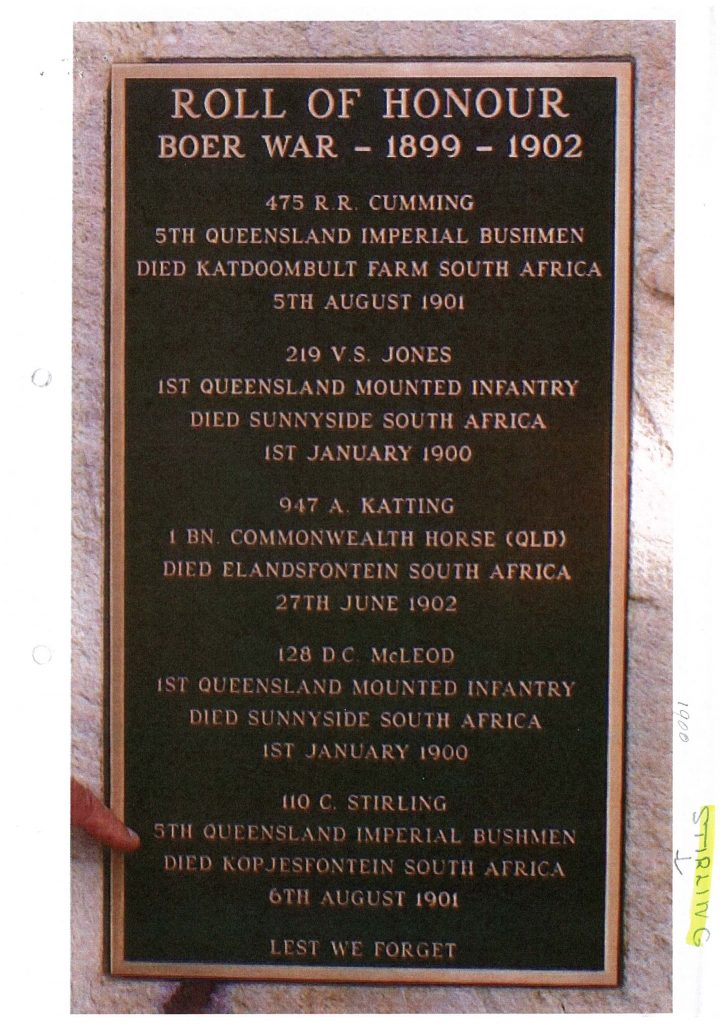
Toowoomba Boer War Memorial
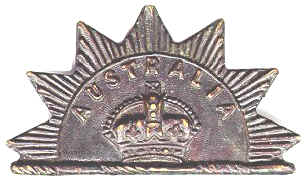
The Badge Worn by the Commonwealth Horse Units was an early version of the Australian Army Badge
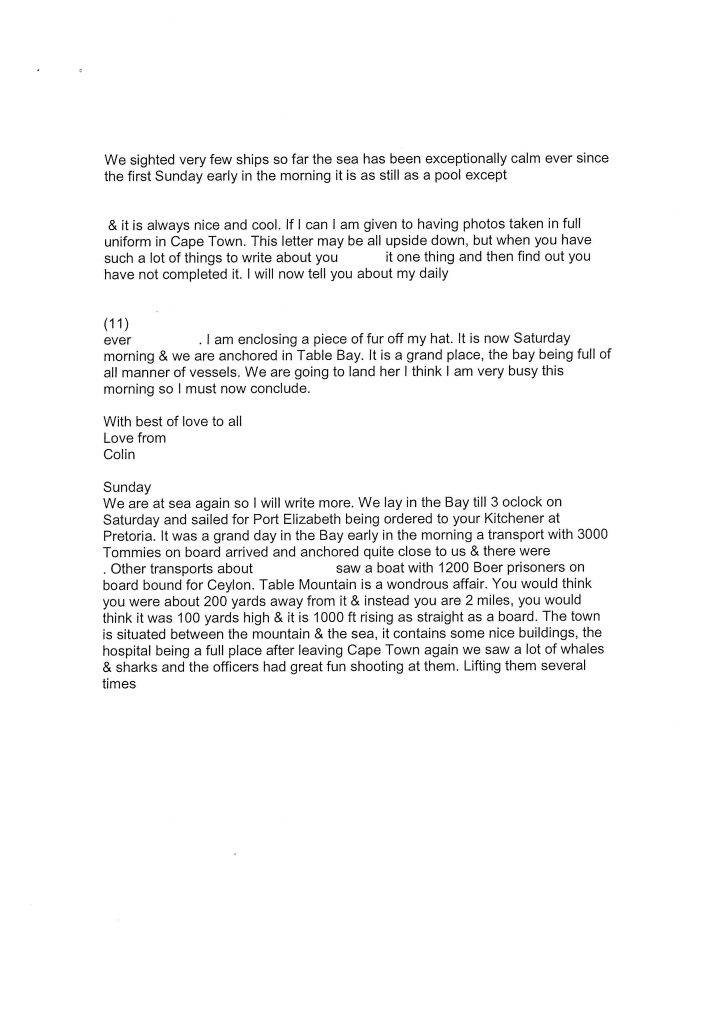
Transcript of a Letter from Colin Stirling to his mother in April 1901, courtesy of Toowoomba Grammar School Archives
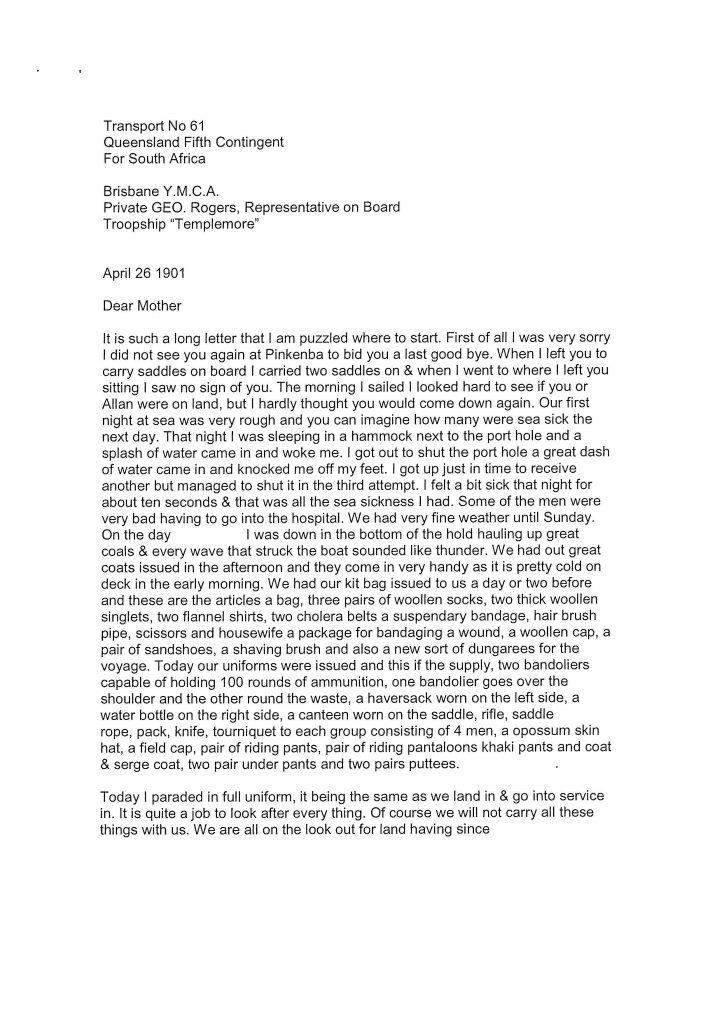
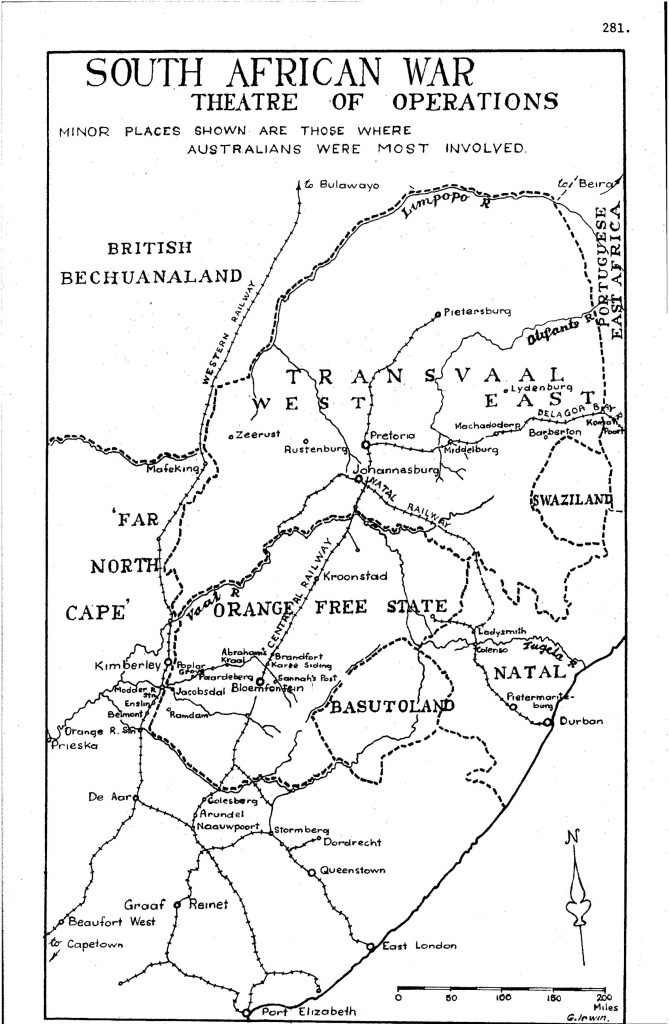
South African War Theatre of Operations from The Forgotten War by LM Field 1973
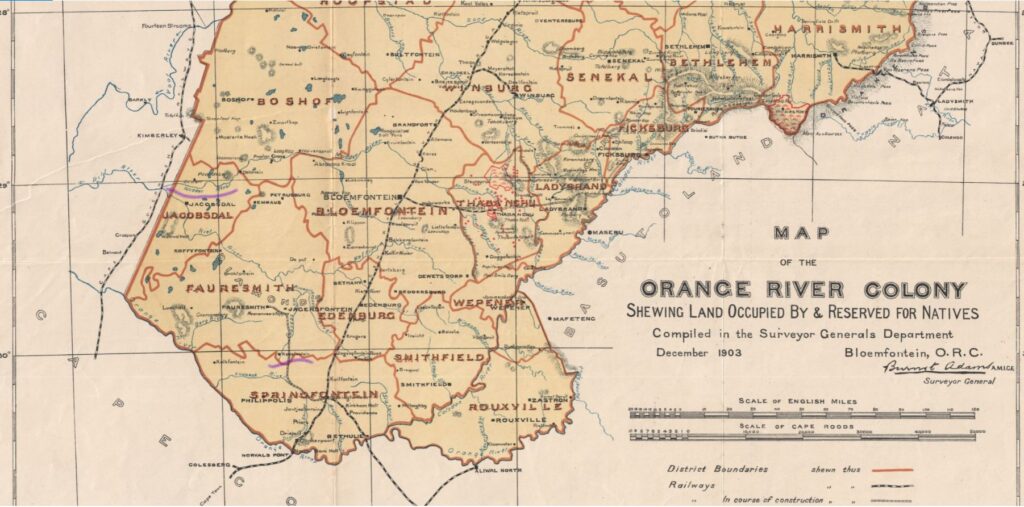
Orange Free Colony, December 1903 – location of Mudda River and Kopperfontein
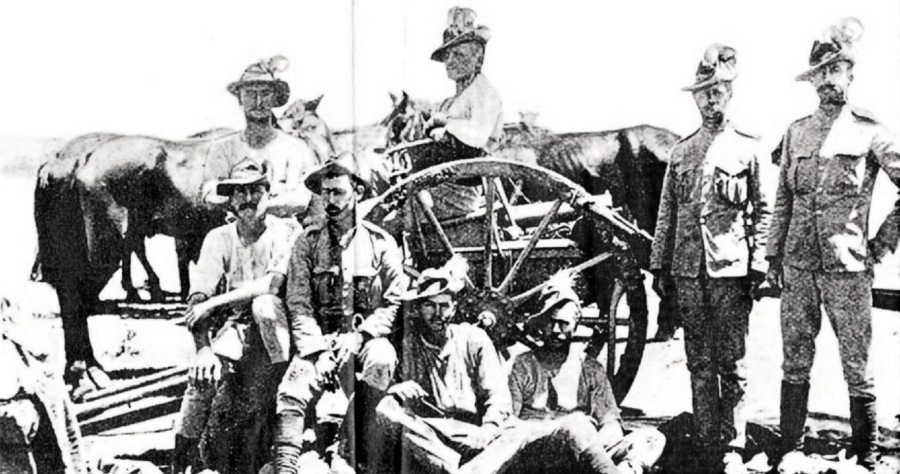
5th Queensland Imperial Bushmen courtesy of the Australian Boer War Memorial Website
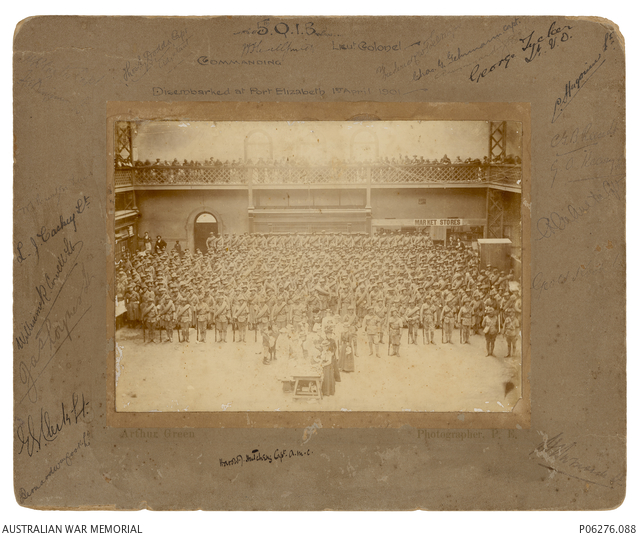
5th Qld Imperial Bushmen Disembarking at Port Elizabeth, South Africa
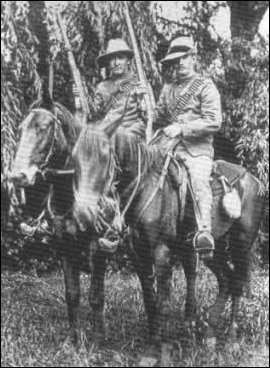
5th Qld Imperial Bushmen
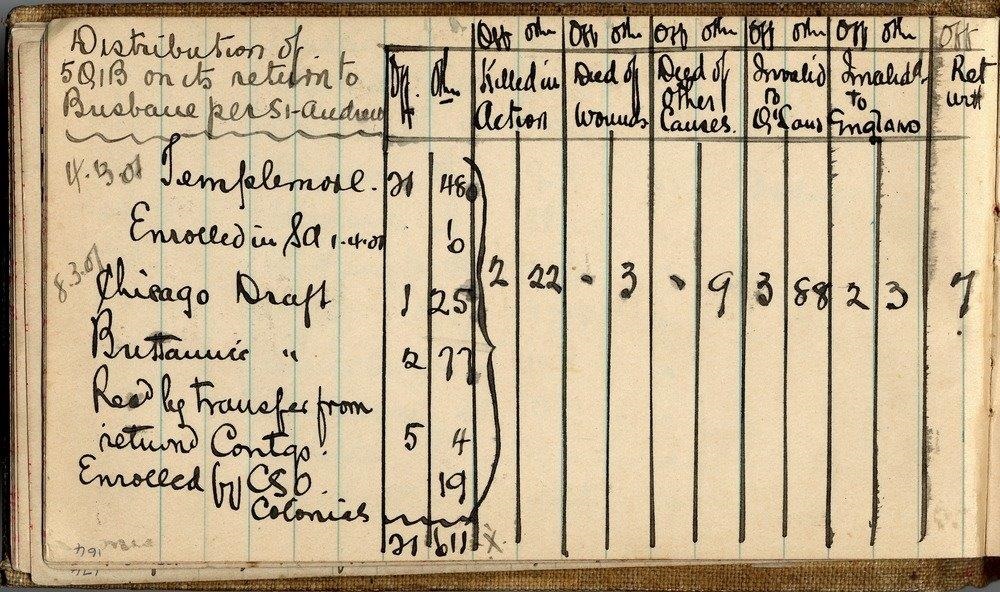
Diary of Major FW Toll – Distribution of 5QIB on its return to Brisbane on St Andrew


